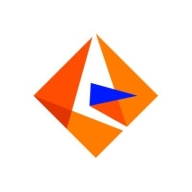

Informatica IDMC and IBM InfoSphere DataStage both compete in the data management and integration market. Informatica IDMC seems to have the upper hand due to its cloud-based model, which offers seamless integration without complex installations, while IBM InfoSphere DataStage is noted for its strong ETL capabilities and performance optimization for large data volumes.
Features: Informatica IDMC offers integration with MDM, data quality, and data integration modules, a cloud-based model for seamless integration, and support for diverse domains like product and location data. IBM InfoSphere DataStage provides powerful ETL capabilities, parallel data processing, and robust metadata management for both business and technical metadata.
Room for Improvement: Informatica IDMC needs enhancements in its GUI, stability of connectivity, and comprehensive reporting. IBM InfoSphere DataStage requires improvements in user interface complexity, cloud integration, and higher operational costs; better performance monitoring and user-friendliness are also needed.
Ease of Deployment and Customer Service: Informatica IDMC supports deployment across cloud, hybrid, and on-premises environments with responsive customer service but mixed technical support feedback. IBM InfoSphere DataStage is generally deployed in on-premises and hybrid environments, with capable and timely customer service but varying response times based on support levels.
Pricing and ROI: Informatica IDMC has high costs with flexible licensing options; it offers substantial ROI for large-scale data operations. IBM InfoSphere DataStage is also expensive, with costs tied to usage and configuration, offering significant value in enterprise environments but potentially less affordable for smaller businesses.
We also have the flexibility to submit a feature request to be included as part of the wishlist, potentially becoming a product feature in subsequent releases.
IBM tech support has allocated dedicated resources, making it satisfactory.
Due to the tool's maturity limitations, solutions are not always simple and often require workarounds.
If they are unsure how to resolve an issue, they keep customers informed, providing updates about progress and ensuring communication with the product team to deliver accurate responses.
The response time is pretty good because we have someone in-house, who is an expert from Informatica, in our team who can help us with any sort of queries usually.
As a SaaS platform, IDMC is quite scalable and provides complete flexibility.
Stability is crucial because IDMC holds business-critical data, and it needs to be available all the time for business users.
I wonder if it supports other areas, such as cloud environments with open source support, or EdgeShift.
The solution needs improvement in connectivity with big data technologies such as Spark.
The licenses are too expensive compared to before, which is why customers are now preferring other data metadata management tools like OneTrust, Collibra, and Azure Purview.
I also want to see integration with other Informatica products, such as IICS, to leverage the metadata from EDC.
The tool needs to mature in terms of category-specific attributes or dynamic attributes.
Pricing for IBM InfoSphere DataStage is moderate and not much expensive.
IDMC is often described as the 'Ferrari of Master Data Solutions,' implying that while expensive, it is business-critical and, therefore, justified.
The licenses are too expensive compared to before, which is why customers are now preferring other data metadata management tools like OneTrust, Collibra, and Azure Purview.
I think the costs are reasonable for the kinds of features that Informatica Intelligent Data Management Cloud (IDMC) has.
As we are a financial organization, security is our main concern, so we prefer enterprise tools.
The failure detection has been very useful for us, as well as the load balancing feature.
In on-premise, we call it EDC for metadata management, while in cloud-based technologies, it is known as the Metadata Command Center, which serves the same purpose as EDC concerning CDGC.
Informatica Intelligent Data Management Cloud (IDMC) can connect to pretty much any application, including Oracle Analytics and Power BI, and it works quite seamlessly.
The platform's ability to pull in data from other platforms without the need for an additional integration tool enhances its appeal.


IBM InfoSphere DataStage is a high-quality data integration tool that aims to design, develop, and run jobs that move and transform data for organizations of different sizes. The product works by integrating data across multiple systems through a high-performance parallel framework. It supports extended metadata management, enterprise connectivity, and integration of all types of data.
The solution is the data integration component of IBM InfoSphere Information Server, providing a graphical framework for moving data from source systems to target systems. IBM InfoSphere DataStage can deliver data to data warehouses, data marts, operational data sources, and other enterprise applications. The tool works with various types of patterns - extract, transform and load (ETL), and extract, load, and transform (ELT). The scalability of the platform is achieved by using parallel processing and enterprise connectivity.
The solution has various versions, catering to different types of companies, which include the Server Edition, the Enterprise Edition, and the MVS Edition. Depending on which version a company has bought, different goals can be achieved. They include the following:
IBM InfoSphere DataStage can be deployed in various ways, including:
IBM InfoSphere DataStage Features
The tool has various features through which users can integrate and utilize their data effectively. The components of IBM InfoSphere DataStage include:
IBM InfoSphere DataStage Benefits
This solution offers many benefits for the companies that utilize it for data integration. Some of these benefits include:
Reviews from Real Users
A data/solution architect at a computer software company says the product is robust, easy to use, has a simple error logging mechanism, and works very well for huge volumes of data.
Tirthankar Roy Chowdhury, team leader at Tata Consultancy Services, feels the tool is user-friendly with a lot of functionalities, and doesn't require much coding because of its drag-and-drop features.
Informatica Intelligent Data Management Cloud (IDMC) is a robust platform used by banks, financial institutions, and health sector organizations for data management, governance, and compliance.
IDMC provides comprehensive tools for data discovery, profiling, masking, and transformation. It supports Salesforce integration, real-time data streaming, and scalable data management solutions. Health organizations manage national product catalogs while financial entities focus on data protection and regulatory compliance. Its intuitive interface, flexible features, and robust tools make it valuable across sectors, though enhancements in data integration and human workflow are being sought.
What are the most important features?
What benefits and ROI should be considered?
Banks and financial institutions use IDMC for data masking, transformation, and compliance, while health sector organizations leverage it for national product catalogs. Industry applications focus on automating business processes, centralizing data, and managing data catalogs to meet regulatory demands and ensure data protection.
We monitor all Data Integration reviews to prevent fraudulent reviews and keep review quality high. We do not post reviews by company employees or direct competitors. We validate each review for authenticity via cross-reference with LinkedIn, and personal follow-up with the reviewer when necessary.